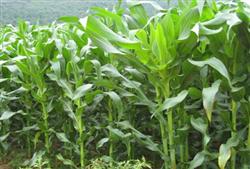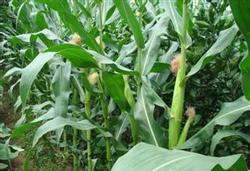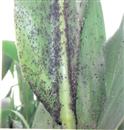Matters needing attention in booting stage Management of Spring Maize

After jointing, the outer plant grows rapidly, and the inner male ear and female ear differentiate one after another. in the differentiation stage, the male ear is slightly earlier than the female ear. When one or two leaves of the plant do not protrude the heart leaf, commonly known as the stage from small trumpet to big trumpet mouth, the differentiation of male female spike enters the tetramolecular stage and floret differentiation stage, respectively. The male spike is the key period of pollen formation, while the female spike is the key period to determine how many florets can be formed, and the number of florets determines how many grains can be formed. Nutrition and water supply play a decisive role in this period. After a long period of growth and development, the available nutrients in the soil have been consumed more. If the nutrients can not be replenished in time and can not meet the needs of ear differentiation, ear differentiation will be affected, abortion will occur, the amount of pollen will be reduced, the activity will decrease, and the normal florets on the female ear will be reduced, resulting in a decrease in the number of grains per ear and a decrease in yield. Therefore, this is a critical period for heavy topdressing of panicle fertilizer. In watery land, it is necessary to seize the time to topdressing more than 20 kg of ammonium nitrate or urea per mu, and it is best to open a hole with a depth of 20 cm at about 25 cm next to the plant, cover the soil after topdressing, and then fully irrigate a water. After water infiltration, deep ploughing should be done once to break the surface consolidation, and at the same time, the plants should be cultivated to promote the growth of aerial roots, increase the absorption capacity of plants, and reduce lodging. Due to the lack of irrigation conditions in dry land, the period of topdressing is difficult to be strictly controlled and can only be operated flexibly according to soil moisture. Generally speaking, on the basis of applying sufficient base fertilizer, from jointing to trumpet mouth stage, topdressing with rainfall, that is, after raining, topdressing with soil moisture, the amount of topdressing should be flexibly controlled according to the amount of base fertilizer and seedling condition, if the base fertilizer is applied more and more and the seedlings are stronger, the amount of ammonium nitrate or urea per mu is 10 kg, the amount of base fertilizer is less, the seedlings are weak, the soil moisture is better, and the soil should be ploughed and loosened after topdressing. Preserve soil moisture, remove consolidation, and reduce fertilizer loss. The trumpet stage is also a critical period for the control of corn borer. 50% phoxim EC can be used to control corn borer, 150ml of phoxim EC, 0.51kg of water, 5kg of sifted cinder, mix well and pile up for 1kg for 2 hours, and the granules can be put into the heart leaf trumpet mouth, about 3 grams per plant; it can also be made with 150ml BT emulsion and 15kg sand per mu, and each plant can be put into heart leaves with 3kg per plant.
- Prev

Rational Application of potassium Fertilizer to promote High yield of Spring Maize
Spring maize grows slowly at seedling stage, the plant is strong, and the lodging resistance is strong. The yield per plant is higher, and it is easy to be infected with diseases in high temperature and rainy season, which will affect the yield of spring maize. Mastering the fertilization method of spring corn can make the high and stable yield of spring corn. Organic fertilizer should be widely applied. Spring corn is a high-yield crop, its yield is high or low.
- Next

Control of spring corn aphid
Spring corn aphids belong to Homoptera, Aphididae, which mainly harms corn, sorghum, wheat, millet and other crops. At seedling stage, aphids cluster on the back of leaves and heart leaves to cause damage. Light caused poor growth of corn, serious damage, plant growth stagnation, or even dead seedlings. In addition, it can also spread jade.
Related
- The first cup of black tea in spring, the flavor and history of tea gardens in Kenya, Africa
- The computer can not only choose potatoes, but also grow tea rice. AI will grow winter oolong tea champion.
- It is not only the inflated tea bitten by insects, but also engraved with the four seasons tea in Beipu.
- The Oriental Beauty Tea Festival in Zhuxian County takes the stage at the weekend to experience the plus-size feast of oil tea.
- & quot; Oriental Beauty Tea & Exploration of Emei in Hsinchu, the hometown of quot;
- The new variety of strawberry "Tainong 1" dessert is the first choice with mellow aroma. Crimson gorgeous
- History of Tea in Taiwan: from Wild Inner Mountain to Export Tea Garden
- Two types of Taiwan Oriental Beauty Black Tea won the British three-Star Award for Childhood Tea Xiang Zhang Jiaqi changed from pilot to champion tea maker.
- Banana species and varieties: the planting history of Taiwan Xianren banana and dwarf banana is long, is banana disease resistant?
- Coffee planting Technology: Qianjie Coffee from Seedling to harvesting

